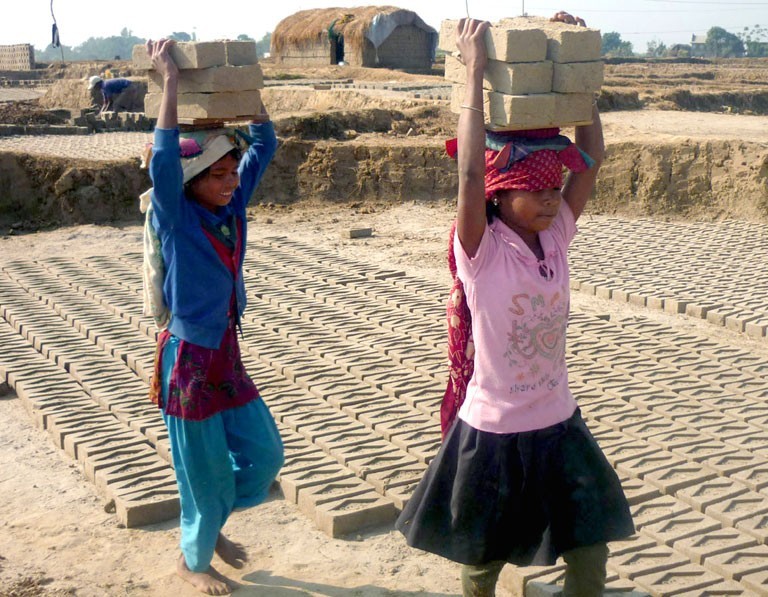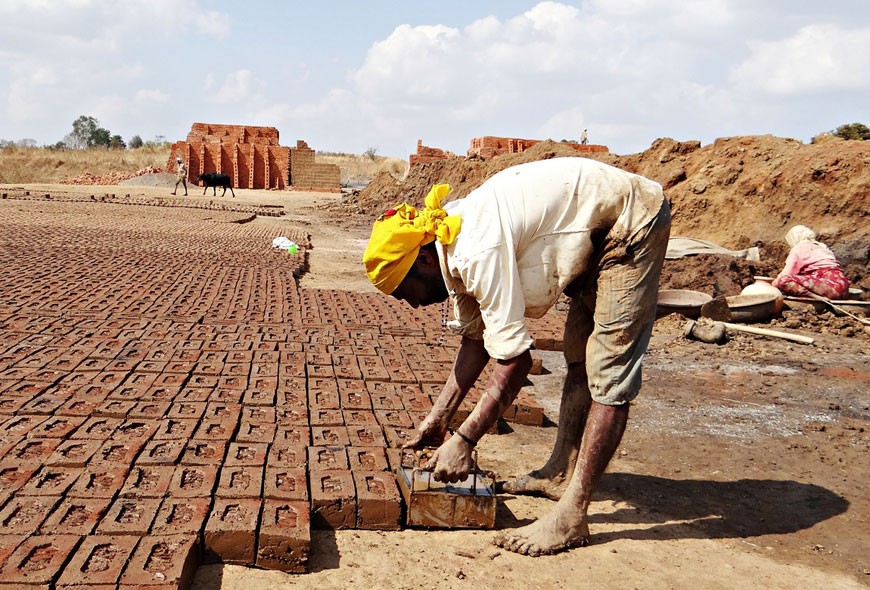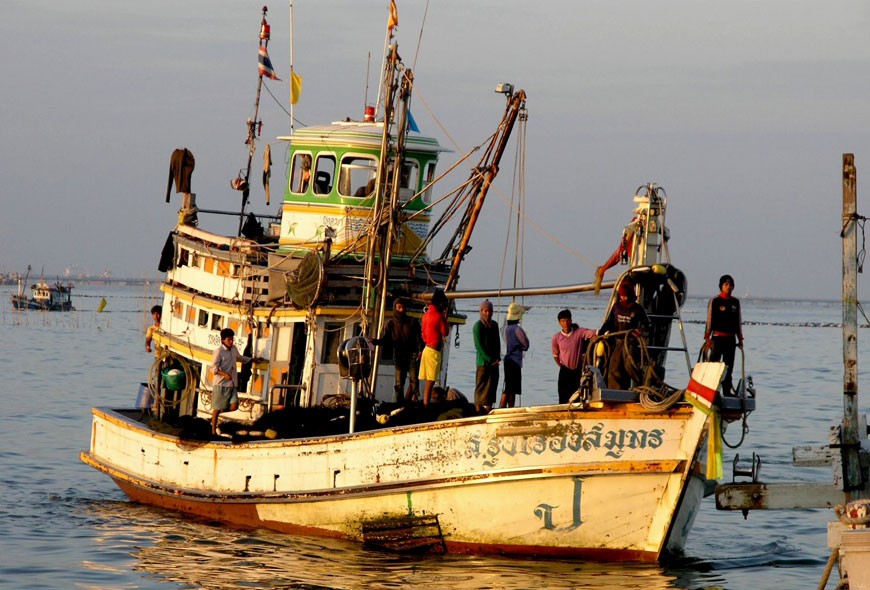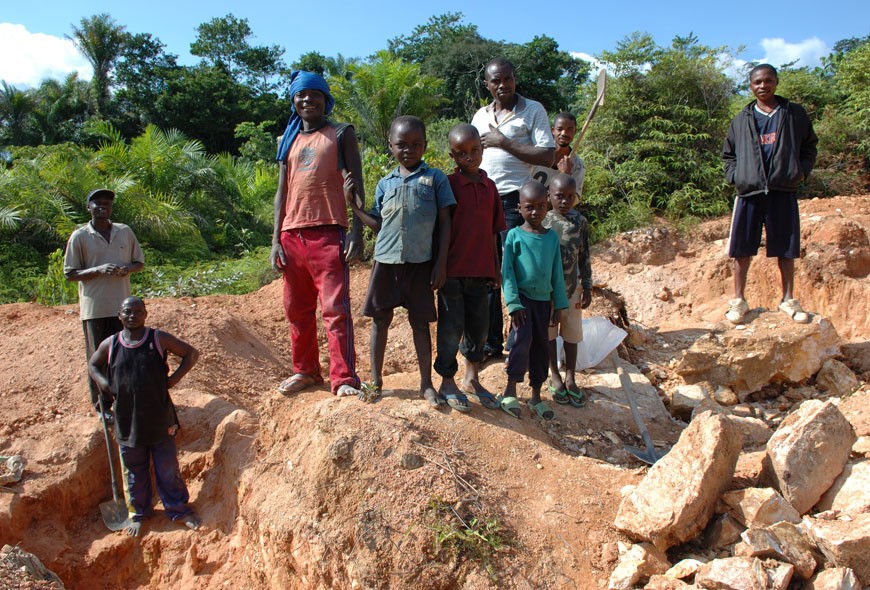The Bonded Labor Economy & Our Consumption of Slavery
By Molly Mintz & Melissa Jane Kronfeld
Last night, you ate a delicious crab cake appetizer at your neighborhood seafood cafe. This morning, you called your friend on your new cell phone. And tonight, you’ll fall asleep safely in the brick building or apartment complex you live in. What do all of these actions share in common? Seemingly separate, they all require products born from the bonds of modern slavery.
Whether discussing the global fishing industry of Thailand, the mining of precious stone and metals in the Democratic Republic of the Congo (DRC), or the mass brick kilns of India, ‘supply chain slavery’ is deeply embedded in every aspect of our life. Compounded by the global culture of consumerism, where there exists a never-ending quest to have more and spend less, the enslavement of millions of people is now greater than ever in human history.
“Most consumers don’t realize their links to modern slavery, but many of the products we love are tainted with forced labor,” explains Nick Grono, CEO of The Freedom Fund to MiLLENNiAL.
“People only think of sexual exploitation when they hear the term ‘human trafficking,’” he adds. “But the reality is that more than three-quarters of slaves are trapped in forced labor and debt bondage, predominantly in Central and South Asia.”
Explaining Exploitation: Forced Labor, Bonded Labor & Debt Bondage
The International Labor Organization (ILO) defines Forced Labor as “situations in which persons are coerced to work through the use of violence or intimidation, accumulated debt, retention of identity papers, or threats of denunciation to immigration authorities.” Reminiscent of Japanese internment camps in 1940s America or the Nazi regime in Germany, this form of slavery is not only a part of or historical memory but it remains a complex and constantly evolving carcinoma in the modern day.
Bonded Labor and Debt Bondage, according to the United Nations, is a form of Forced Labor that results from, a worker owing some form of debt to an employer. Sometimes this is a result of an advance of wages, sometimes pure treachery on behalf of the employer or recruiter. Sometimes it is both.
“For example,” Grono explains, “in India a man might take a three-dollar loan to buy medicine for a sick family-member. Because he is illiterate, he will sign a document he cannot read and accrue illegal interest on that loan that he could never afford to pay. The grantor of the loan will require him to work, under threat of violence, in order to pay it back, thereby trapping him and his children, and his children’s children, in generations of forced labor.”
The ILO estimates that the Asian Pacific region accounts for as much as 56 percent of this slave population, while Africa represents 18 percent and Latin America nine percent respectively. Even in the developing world, Forced and Bonded Labor is prevalent. Continental Europe and Russia have a combined 14 percent, while the Middle East possesses three percent.
But as Ayush Khanna of LaborVoices, a social enterprise that uses technology to provide global brands with better supply chain data, tells us, it is hard to get clear, transparent data.
“Sometimes a typical brand will source from hundreds of factories from tens of countries seeking the cheapest, most effective, fastest means of producing goods,” Khanna says, making the compilation of adequate statistics, as is the case across all forms of slavery, virtually impossible.
The Blood Bricks of India
India is the world’s tenth largest economy, but it thrives on the backs of millions of slaves fueling the developing country, an estimated 10 million of whom are trapped in India’s informal kiln industry. Unregulated by the Indian government, and in many cases illegal operations themselves, kilns easily entrap the poorest of Indian society into a lifetime of building the “blood bricks” used in construction across Southeast Asia and the world.
Recruited with the promise of an advance on earned wages, workers are immediately bound to their employer, who can arbitrarily set exorbitant interest rates or manifest miscellaneous expenses, forcing the laborer into a debt they can never repay. This debt is intergenerational, passed from parent to child, enslaving families across time with no recourse.
Violence, harsh conditions, injury, illness, and sexual assault are commonplace, as is the use of children (as young as four), in the 18 to 22 hour workday, during a seven-day production schedule week. None are ever made aware that they have a right to fair treatment, fair wages, and other basic amenities afforded to workers in India.
The Seafood Slavery of Thailand
Southeast Asia is also a major player in the global seafood industry, and represents, according to the East-West Center, more than 30 percent of the total U.S. market. In an ongoing investigation into the seafood industry, the Associated Press discovered that at least 40 popular American name brands have seafood slavery embedded in its supply chain.
And in order to sustain the incredible worldwide demand for fresh fish, men, women, and especially children catch, peel and prep shrimp with no rest and no pay reaping a profit of $7 billion annually for the seafood industry. They receive numbers in lieu of names and, when they are not working, are kept locked in crowded dorm rooms or squalid shacks. With so many human beings in such close quarters, living conditions are putrid at best.
Out at sea, Thailand’s fishing boats have become notorious havens of Forced and Bonded Labor, particularly for children, who are treated no better than the fish they catch. Stockpiled in ocean vessels for years on end, sold from one boat to another on the open seas, and simply thrown overboard when sick, injured or no longer useful, slaves are disposable commodities for the fishing industry. Subject to minimal supervision by authorities on the land, the open oceans have become an epicenter of exploitive labor.
The Slave Mines of Africa
Mining is big business – whether for precious stones or minerals, the demand for sparkling baubles and the natural resources needed to power electronic devices is insatiable. Conflict diamonds, popularly referred to as ‘blood diamonds’, have funded insurgent wars for decades across Africa, particularly in the DRC, Liberia, and Sierra Leone. And although the diamond industry has gone to great lengths to regulate itself, the higher the demand for any commodity, the greater the risks someone will be willing to take to bring it to market.
The same cannot be said of mineral ores – like coltan, tin, tantalum, and tungsten – where the pressure brought to bear on the electronics industry has had little effect in diminishing the use of slave labor in their supply chains, including in your favorite Apple products.
Some of the worst abuses occur in the DRC. Like with precious stones, mineral miners labor up to 18 hour a day under the African sun, in dangerous underground conditions with primitive tools, making between $1 and $5 a day (if and when paid) for a product that fuels a global smartphone industry of almost $400 billion annually. These profits, a large percentage of which is controlled by terrorists, militias and rebel groups is, according to the United Nations, the “engine of conflict” across Africa, and a sobering reminder of how our daily decisions are not as un-ordinary as we think.
These three examples barely scratch the surface of the extent to which Forced and Bonded Labor exists today. Numerous other cases abound: from the construction of the World Cup soccer stadium in Qatar, to the carpet factories of Pakistan, or the coca fields of Latin America, Bonded and Forced Labor is everywhere, it is inescapable, and its is growing.
More, More, More: The Consumption Economy & the Modern Day Slave
How did the problem get so bad, you might wonder? The answer is simple: it was us. Our voracious consumerism subjugates workers at a rate and on a scale unparalleled in human history. The speed with which the average consumer is demanding, purchasing and disposing of ‘stuff’ undeniably plays a role in keeping more than 45 million people (according to the 2016 statistics provided by Walk Free), trapped in slavery across the world today.
But the sheer scale of the global economy is also the key to solving the crisis of Forced and Bonded Labor. As Khanna notes, “brands will listen to the money, and we as consumers wield the money to make them listen.” By making conscious decisions in our daily purchases, by investigating the practices of the companies we shop, and by holding accountable corporate leadership across all industries, change can happen – and more rapidly than we may think.
Free Yourself: Minimizing Our Slavery Footprint in the Era of Globalization
Khanna believes that technology is paving a path towards freedom and supporting the fight against slavery in a way it has never been able to before. Grono agrees.
“Technology drives transparency,” he notes. “It allows us to be connected to the people and stories behind our products in ways that were never possible before. It drives better communication, allowing organizations and companies to listen to workers and help them to better express their rights.”
And Millennials, Khanna believes, are the generation most able to use technology and most possessing of the skill sets required to apply it to the fight against Forced and Bonded labor.
“Young people do not realize the incredible power they have to be advocates and change agents on the issue of modern slavery,” Grono explains. “Never before has a generation been more connected or networked than Millennials, and they can use the power of that influence to educate and mobilize others about the realities of slavery in our world.”
The responsibility is ours to not only want, but to will an end to Forced and Bonded Labor. Khanna reminds us that we can start by being an engaged consumer: “Ask. Look around you. Look for information. Do your research. Investigate brands. Question the supply chain. Get involved in the products that you buy.”
And he is right. The fight against slavery will only be won when we’re all in it together. And we each play our part.
Interested in learning more about Forced and Bonded Labor? Explore the issue by visiting The Freedom Fund, the International Labor Organization, Free The Slaves and the International Justice Mission and the work they are doing. Check out investigations into the global seafood industry conducted by the New York Times and The Guardian and read the books Bonded Labor: Tackling the System of Slavery in Southeast Asia (2014) by Siddarth Kara and Remembering Survival: Inside a Nazi Slave-Labor Camp (2011) by Christopher Browning. Watch the documentary films Blood Diamonds, Supermarket Slave Trial or Bricks of Bondage to get a first hand perspective of slavery in the mining, fishing and kiln industries. Then start being part of the solution by downloading the Seafood Watch app for iPhone or Android to find ocean-friendly and sustainable options in your neighborhood.
This is the second article in a 10 part series highlighting modern slavery and trafficking in the Twenty-First Century. Read part one here. Then check back with MiLLENNiAL over the coming months to learn more about this critical issue and how you can join the movement to #EndSlaveryNow!













